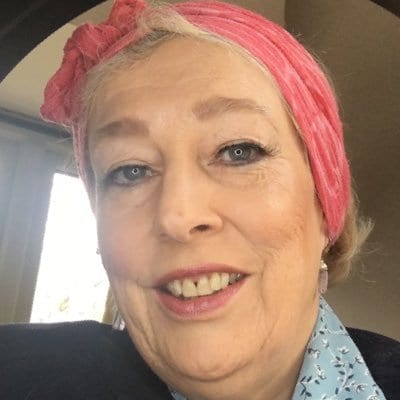The site of Scotland’s most historic battle is at the centre of a war of words after a schoolgirl’s essay highlighted the injustices faced by Palestinians in the 21st century. Her words were used in an exhibition called General Change: Young People’s Participation in Protest, in which she wrote an essay about how Israel had “pushed out Arabic communities from their homes by force” and accused the Zionist state of “institutionalised discrimination” against Palestinians living inside Israel. Neither refugees nor displaced persons, these Palestinians are Israeli citizens. And they do indeed face a plethora of discriminatory laws enacted by the country’s parliament, the Knesset.
Zionists, including a Member of the Scottish Parliament (MSP), accused the Bannockburn Visitor Centre in Stirling of exhibiting anti-Semitic content, forcing the National Trust for Scotland (NTS) to remove the essay and issue an apology. The row made headlines in local media as well as Jewish community newspapers. However, angry critics of the NTS, including some of its 300,000 members, fired back by pointing out that the girl was, in fact, simply telling the truth. Institutionalised discrimination is the reality of racist Israel, which has been described as an apartheid state by B’Tselem and Human Rights Watch.
The exhibition was staged to illustrate the involvement of young people in contemporary protest movements and included views supporting Black Lives Matter and the global environmental campaign Extinction Rebellion. Only the words and images related to occupied Palestine were removed, though, provoking accusations of heavy-handed censorship by the charity, which looks after ancient houses, battlefields, castles, coastlines, islands and mountain ranges in Scotland.
Organised by Young Scotland, a charity and community action group for 11 to 26-year-olds, the Bannockburn Visitor Centre was chosen to host the schoolchildren’s exhibition which examined the theme of protest. It was at Bannockburn in 1314 that the most celebrated battle in Scottish history helped establish Robert the Bruce as de facto King of Scotland; for centuries ever since, it has been commemorated in books, songs, poetry and paintings.
Mick Napier, a co-founder of Scottish Palestine Solidarity Campaign, said that he and his group were outraged by the NTS decision. “It’s not the censorship exactly, we are inured to that. It’s that an exhibition at Bannockburn encouraged young people to write about their protests in general. Some kids wrote about climate change, others about racism and black lives matter, which of course they do, and one of them wrote about Palestine.”
Napier pointed out that the essay in question was “word perfect” but, as a result, had offended Zionists in Scotland “who we know are linked to the Israeli Embassy”. He said that the complainants urged the NTS to remove the essay and images from the overall exhibition which was an act of “unacceptable” and “disgraceful” censorship.
“Emily wrote that the Palestinians had been kicked out of their homes and land in 1948 and those Palestinians living in Israel today suffer from institutional discrimination. Both of these descriptions are incontrovertible and undeniable.”
READ: How many more Palestinians must die for the sake of Israel’s ‘security’?
SPSC chair Eurig Scandrett wrote to Professor Philip Long, Chief Executive of the NTS, demanding an explanation and urging a review of the decision to remove the Palestinian section of the exhibition. “If reports are accurate,” he wrote, “then it would appear that the NTS has succumbed to pressure, not simply from members of the Jewish community, but rather from groups seeking to justify the human rights abuses of the Israeli state.”
Scandrett told the NTS that the SPSC membership included “Jewish critics of Israel and Palestinians in Scotland, many of whom are refugees from the well documented forced expulsions and institutionalised discrimination apparently referenced in the exhibition.” He added that the human rights abuses of the state of Israel against the Palestinians rightly concerns many young people who have been participating in protests in Scotland. “This is especially so following the recent evictions of Palestinian families in occupied East Jerusalem and violence against the population in the Gaza Strip under an illegal [Israel-led] blockade.”
Professor Long’s response included confirmation that complaints were received from “members of the public and an MSP, all of whom expressed concern that the display in question provided by the young people involved did not offer a balanced perspective. On that basis, it was decided to close the display a few days ahead of the scheduled end date of 31 August.” The SPSC is unimpressed. It says that it is penning another letter to the NTS Chief Executive.
The latest battle at Bannockburn is thus far from over. Seven hundred years on from the original battle, when Robert the Bruce defeated the oppressive English occupiers under King Edward II in the first war of Scottish independence, the site is at the centre of another war over a brutal occupation and tyranny, this time in Palestine. The English-dominated government in Westminster plays a major role in that as well.
READ: Times columnist suggests Young Labour supports ‘second Holocaust’ over criticism of Israel
The views expressed in this article belong to the author and do not necessarily reflect the editorial policy of Middle East Monitor.

![A demonstrator raises her hand, painted with the colours of the Palestinian flag on 30 July 2021. [AHMAD GHARABLI/AFP/Getty Images]](https://i0.wp.com/www.middleeastmonitor.com/wp-content/uploads/2021/08/GettyImages-1234323808.jpg?fit=920%2C613&ssl=1)








